QuestionWe have a lab/sheppard cross. She discovered a stuffed toy resembling a Dalmation and that barks when you squeeze it. The past few days she has been walking around the house holding it in her mouth and wining as she's walking. When she lies down she will make sure she's cuddled up to the toy and licks it all over, almost like a real puppy. Her behavour is really freaking us out as we haven't seen this before. She is very protective of the puppy and growls when either of our two other dogs goes near her. Any ideas why she's acting like this. She's not pregnant or in heat (she's not due for a heat for another 4 months).
Thanks.
AnswerHi,
Thank you for writing to me about your dog's resource guarding behavior.
Below find some information that should be helpful:
There are dogs who growl and snap when approached while chewing a toy, eating or lying on a favorite spot. These dogs are guarding what they consider to be a valuable resource. That's why this type of behavior can be called "resource guarding."
Possible Causes:
Some dogs are prone to this because of temperament tendencies. Others have learned to be this way. For example, if a dog has been "attacked" by humans after dropping something such as a shoe. How, then, can a dog prevent your wrath? (this is just an example of how something like resource guarding can develop. There are other reasons). Dropping it didn't work. Some dogs will then choose aggression in an attempt to back you off. This is painfully familiar to many owners. This behavior can be a part of a general confusion about who leads and who follows in the home.
Recommendations:
First of all, remove anything your dog may protect. Keep your on lead in the house so you can more easily control him.
Teach your dog to "Leave It" in a positive, fun way. Do NOT make this into a battle. Make him think this command is an opportunity for a reward, not a chance to lock horns with you. Always start teaching this command with boring objects so that praise and treats will be the obvious choice.
Reward spitting things out. Much of this sort of aggression is man made. People get angry when their dog takes things, then fail to give the dog a way to please them. They create a situation where, once something is in their dog's mouth, there is no way for the dog to win. This can force the dog to start defending himself.
Here's the rule: Once something is in your dog's mouth, it is TOO LATE to teach your dog not to take it. The only thing you can teach now is to spit it out promptly. Therefore, reward spitting it out.
Take then Give. Early on, practice "Out" with your pup. Walk up when your dog is chewing a toy. Say "Out" and take the toy. Praise your pooch for being brilliance. Give your dog a treat. Return the toy and leave pooch alone. A few weeks of this once or twice a day and your dog will want you to come and take its toys.
Neuter or spay! The most serious bites come from intact male dogs and females in heat. Make the neuter appointment today!
Ignore. Do not look at or speak to your dog unless it is working for you and even then, keep attention short, sweet and intense after which you ignore once again. You want your dog to want your attention, not constantly be getting more of it then pooch desires. Leave your wanting more.
Redirect. If your is pawing you then keep it on lead and work pooch's demanding self. Every time your dog paws you have it "Sit, down, Sit, down -- come, stay, OK" -- with little praise. Your dog may well decide that a nap is a better idea.
Teach your dog to move out of the way. This will help with understanding that you lead and it follows. If it is safe to do, simply shuffle your feet into your pooch (no kicking) until there is movement away, then praise. Or leave a lead on your dog and guide out of the way then praise.
Your dog owns nothing! There are no "favorite" chair or toys that are "your dogs" -- everything in the house is yours. If pooch is protective over anything, a bowl or a toy, remove it until there is an improved attitude.
All of your dog's time must be spent on the floor. The higher up a dog is in the room, the higher up the dog is in its head. Nope, munchkin's place is on the floor. Teach it to get off things on command. Always praise cheerfully for obeying. If need be, close off rooms and/or leave a lead on your pooch so you can manage your dog more easily. Always praise cheerfully for obeying --- that is important!
Confine your dog daily. Daily crating is a generally good routine for this sort of dog and keeps it out of trouble in many ways. Even if you are home, crate your dog for several hours every day. [Note: many behaviorists advise that it can be counter-productive to crate a dog more than 5 hours a day over the long term.]
Increase exercise. This is a great deal of change for your dog. Exercise will help relieve stress and release excess energy. Be sure to play games that promote cooperation and control -- skip tug-of-war, wrestling and chasing after a running pooch.
NOT recommended:
Going to battle over a squeaky toy. Your dog, no matter how small, can injure you. When a dog shows it is ready to battle a human, we already know that it is misinformed and confused. We need to straighten out that confusion prior to discussing that unwanted aggression. If you attack your dog for threatening to attack you, you may well escalate its aggression. And, even if you "win" your may decide to fight sooner and harder next time. What your pooch needs is education, not attack.
Anytime -- ANYTIME -- your dog threatens you, hands-on help from a qualified professional is the best next step. Aggression is complicated and, if it isn't dealt with quickly, can get worse. That means for both you and your other dogs. In the end, it can lead to the death of your dog assuredly as any disease.
Common Mistakes:
* Thinking it is OK for your dog to have a chair or a toy that is "his."
* Assuming your dog won't bite.
* Avoiding the problem rather than dealing with it.
* Leaving toys that you know your dog is protective over out because "it likes them so much."
* Thinking this behavior will get better with time.
* Allowing denial of the problem to put other people at risk.
Further Advice: Seek any and all help, including from your veterinarian. Ask your vet to first run a full blood workup to see if there is any underlying medical cause for this behavior.
I hope that this advice has shed some light on the problem as well as offering possible solutions.
Best of Luck,
Shelley Davis

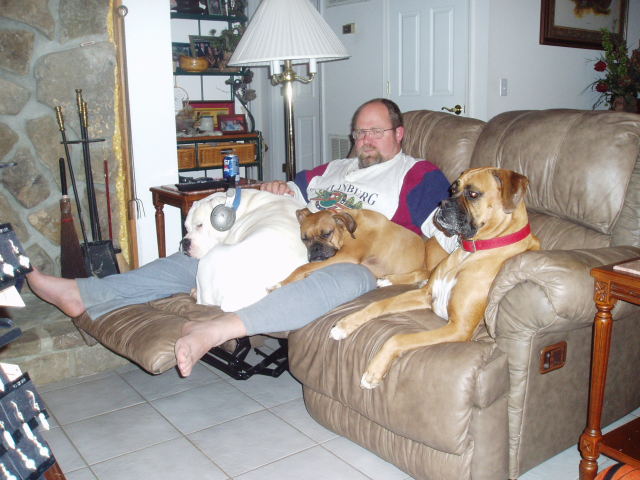 aggressive behavior between my 3 dogs
Question
My loves watching tv
I have always had boxers,
aggressive behavior between my 3 dogs
Question
My loves watching tv
I have always had boxers,
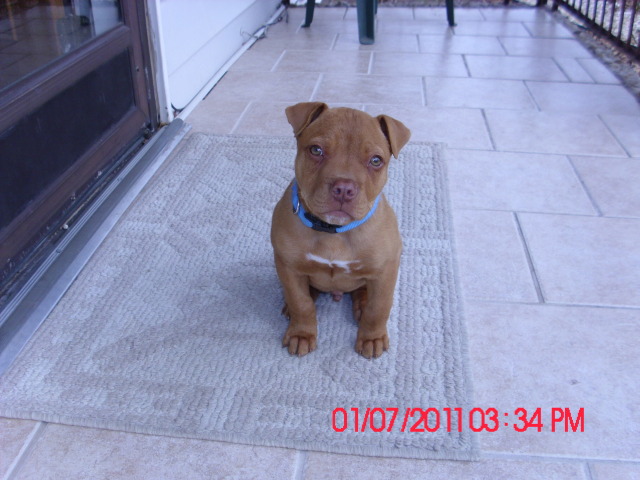 puppy medical concerns
Question
Rusty
my 11 week old red nose pit bull at time
puppy medical concerns
Question
Rusty
my 11 week old red nose pit bull at time
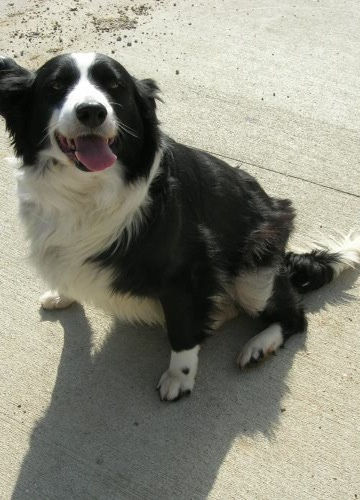 dog who growls and nips
Question
Ladybug
We adopted a rescue dog, Ladybu
dog who growls and nips
Question
Ladybug
We adopted a rescue dog, Ladybu
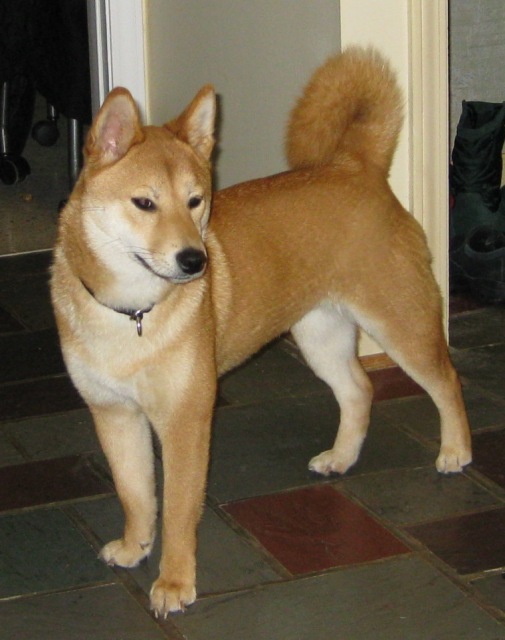 Rescued Shiba with ISSUES
Question
Shredder
Kristin,
I consider myself an experie
Rescued Shiba with ISSUES
Question
Shredder
Kristin,
I consider myself an experie
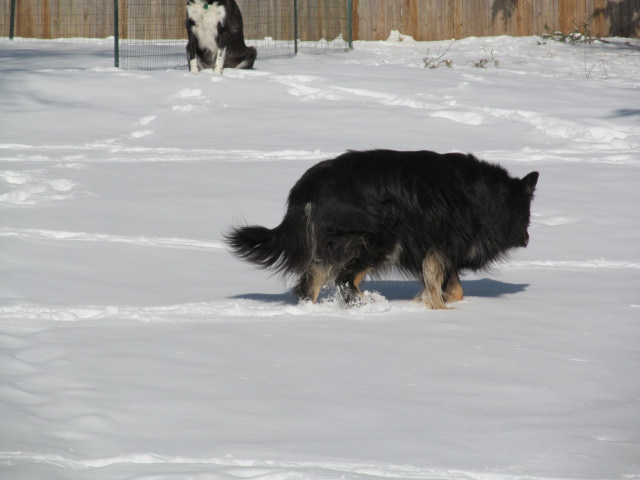 Old dog, old owner, grooming issues
Question
Jessis
I have a 13-yr-old German shephe
Old dog, old owner, grooming issues
Question
Jessis
I have a 13-yr-old German shephe